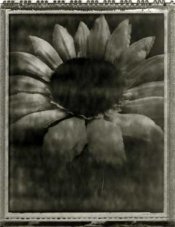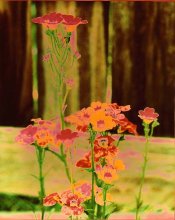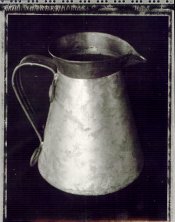Hey PE,
Understand, I am newbie at this, but this is how I approach it. I've read a couple of different ways to do this, and Alex and Bob have been a big help to me in understanding this.
For the polaroid T55, give an initial in-camera exposure of about half that for a normal exposure. Then at about 1/4 to 1/3 of the way through development peel apart the print/negative sandwich. I have the best luck at about 5 seconds. Then hit the negative with a flash burst, or many bursts, and clear the negative. The burst will reverse the image to a small or large extent depending on initial exposure, power of burst, distance from flash to negative, development time, etc. Many variables.
The goal is to get about half of the image to reverse. That's why on my first example I got almost total reversal and thought maybe I went too far. However, I'm not that familiar with this to know that for sure. I don't know if more flash would give me the mackie lines, or if it needed less flash.
Anyway, I would be interested in seeing a couple of your images that have this effect. If you are so inclined you could post them here or PM me.



















